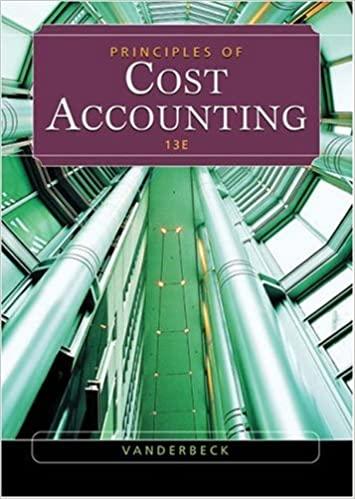Question
Case Study - Part 1 Mary Dvorak organized Mullin Enterprises, Inc., in January 2019. The corporation immediately issued at $12 per share on half of
Case Study - Part 1
Mary Dvorak organized Mullin Enterprises, Inc., in January 2019. The corporation immediately issued at $12 per share on half of its 300,000 authorized shares of $1 par value common stock. On January 2, 2020, the corporation sold at par value the entire 6,000 authorized shares of 7 percent, $30 par value cumulative preferred stock. On January 2, 2021, the company again needed capital and issued 3,500 shares of an authorized 12,000 shares of no-par cumulative preferred stock for a total of $455,000. The no-par shares have a stated dividend of $10 per share. The company declared no dividends in 2019 and 2020. At the end of 2020, its retained earnings were $275,000. During 2021 and 2022 combined, the company earned a total net income of $920,000. Dividends of 80 cents per share in 2021 and $1.15 per share in 2022 were paid on common stock.
Required:
1. Prepare the stockholders equity section of the balance sheet on December 31, 2022. Include a supporting schedule showing your computation of retained earnings at the balance sheet date. (Hint: Income increases retained earnings, whereas dividends decrease retained earnings). Ensure that your partial balance sheet is labeled correctly and uses the correct format for the stockholders equity section of the balance sheet.
2. Assume that on January 2, 2020, the corporation could have borrowed $180,000 at 10 percent interest on a long-term basis instead of issuing the 6,000 shares of the $30 par value cumulative preferred stock. Identify two reasons a corporation may choose to issue cumulative preferred stock rather than finance operations with long-term debt. Answer Format: You will be required to use the Week 5 Case Study Template that has been included on the Case Study page in Engage. The template is an excel spreadsheet and has been set up for ease of completion and grading.
Grading:
Your response will be graded based on the accuracy of the calculations, labels and formatting of the partial balance sheet. You need to show your work and computations within excel. Use the formula functions within excel for addition, subtraction, multiplication and division computations. I should be able to follow your calculations by clicking in any of the cells. If you do not show your work, you will receive a ZERO on the assignment. You can refer to the video in Engage on the Case Study page in week 5 for additional information on how to show your work in excel. Showing your work does not mean typing each individual formula. You need to use the appropriate formula functions within excel. Any written responses will be graded based on your ability to fully answer the question concisely, and without any spelling or grammatical errors (you should use spell check in Excel).
Case Study Part 2
Below is a series of questions about equity for a publicly owned company described below. You are required to answer each question. Ensure that your response is concise and conveys that you have a full understanding of the material. Your written responses should be in a separate Word document. Corliss Corporation is a publicly owned company. The following information is taken from a recent balance sheet. Dollar amounts (except for per-share amounts) are stated in thousands.
Stockholders Equity Convertible $10 preferred stock, no par value, 1,000,000 shares authorized, 200,000 shares issued and outstanding, $100 per share liquidation preference $97,200
Common stock, $2 par value, 50,000,000 shares authorized 93,000
Additional paid-in capital 124,750
Retained earnings 87,500
Total stockholders equity $402,450
Required:
From the information above, answer the following questions (show/describe calculations as appropriate).
- How many shares of common stock have been issued?
- What is the total amount of the annual dividends paid to preferred stockholders?
- What is the total of paid-in capital? What is the book value per share of common stock assuming no dividends and arrears?
- Explain the advantages and disadvantages to Corliss Corporation of being publicly owned rather than operating as a closely held corporation.
- What is meant by the term convertible used in the capital of preferred stock?
- Is there more information that investors need to know to evaluate this conversion feature?
- Assume that the preferred stock currently is selling at $150 per share. Does this provide a higher or lower dividend yield than a 5 percent, $100 par value preferred with a market price of $77? Show computations. Explain why one preferred stock might yield less than another.
Step by Step Solution
There are 3 Steps involved in it
Step: 1

Get Instant Access to Expert-Tailored Solutions
See step-by-step solutions with expert insights and AI powered tools for academic success
Step: 2

Step: 3

Ace Your Homework with AI
Get the answers you need in no time with our AI-driven, step-by-step assistance
Get Started


